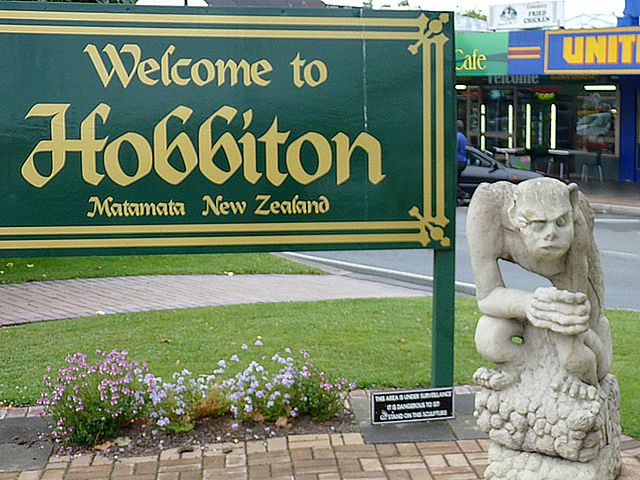The Two Towers is the second volume of J. R. R. Tolkien's high fantasy novel The Lord of the Rings. It is preceded by The Fellowship of the Ring and followed by The Return of the King. The volume's title is ambiguous, as five towers are named in the narrative, and Tolkien himself gave conflicting identifications of the two towers. The narrative is interlaced, allowing Tolkien to build in suspense and surprise. The volume was largely welcomed by critics, who found it exciting and compelling, combining epic narrative with heroic romance.
Tolkien's own design for the volume's cover shows the two towers as Minas Morgul, white with the symbol of the rising moon, and Orthanc, black with Saruman's symbol of the white hand nearby.
The Lord of the Rings is an epic high fantasy novel by the English author and scholar J. R. R. Tolkien. Set in Middle-earth, the story began as a sequel to Tolkien's 1937 children's book The Hobbit, but eventually developed into a much larger work. Written in stages between 1937 and 1949, The Lord of the Rings is one of the best-selling books ever written, with over 150 million copies sold.
Beowulf's eotenas [ond] ylfe [ond] orcneas, "ogres [and] elves [and] devil-corpses" helped to inspire Tolkien to create the Orcs and Elves of Middle-earth.
Barbara Remington's cover illustrations for the Ballantine paperback version "achieved mass-cult status" on American college campuses in the 1960s. They were parodied by Michael K. Frith's cover design for the 1969 Bored of the Rings.
"Welcome to Hobbiton" sign in Matamata, New Zealand, where Peter Jackson's film version was shot


![Beowulf's eotenas [ond] ylfe [ond] orcneas, "ogres [and] elves [and] devil-corpses" helped to inspire Tolkien to create the Orcs and Elves of Middle-e](https://upload.wikimedia.org/wikipedia/commons/thumb/c/cd/Beowulf_eotenas_ylfe_orcneas.jpg/640px-Beowulf_eotenas_ylfe_orcneas.jpg)

